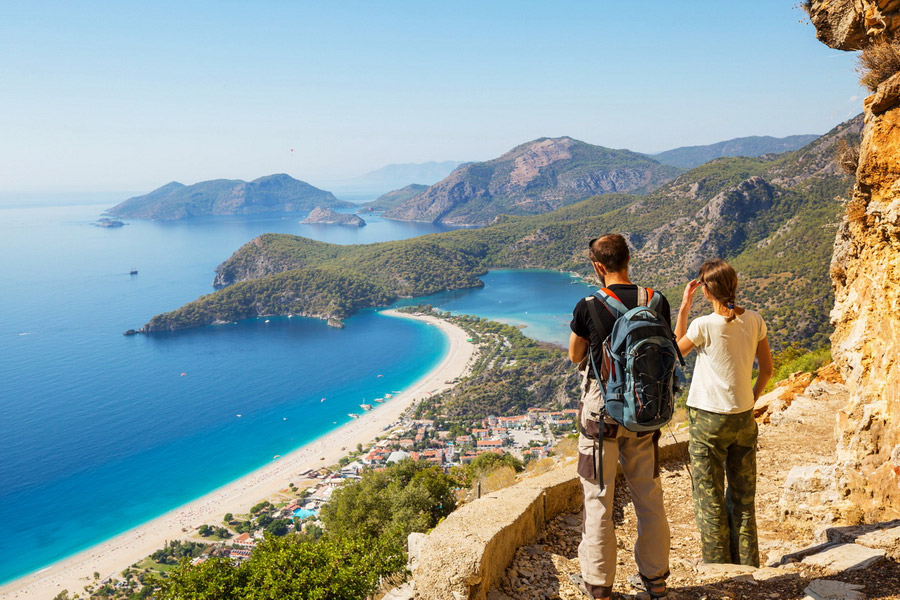Tourists know the ancient sites and gorgeous beaches, but there are plenty more things to do in Turkey (Türkiye) than browse its colourful bazaars and must-see landmarks. Turkey is a paradise for nature lovers, with an incredible food scene and an impressive UNESCO-recognised cultural heritage on the Silk Road.
Whether visitors want to escape the clamour of big cities for laid-back, charming towns, watch whirling dervishes, or delight in the sunrise over Marmaris Marina from a gulet, there is so much to explore across this beautiful country. Travellers will undoubtedly find something to inspire a holiday in our guide to all the best activities in Turkey.
- 1. Yacht Cruise on the Bosphorus Strait
- 2. Bath in the Turkish Hammam
- 3. Pray in an Unusual Mosque in Istanbul
- 4. Go Skiing in Uludağ
- 5. Taste Turkish Dishes
- 6. Take a Luxury Gullet Cruise
- 7. Fly Paragliding Over the Blue Lagoon
- 8. Trek the Lycian Way
- 9. Stay with a Local Family
- 10. Tour the Silk Road in Turkey
- 11. Shoot at the Traditional Archery Session
- 12. Taste Turkish Wine
- 13. Shop for Turkish Handcrafts
- 14. Explore Olive Oil Production in Turkey
- 15. Learn About Storytelling Style of Meddah
- 16. Embrace Turkish Coffee Culture
- 17. Appreciate Turkish Tea
- 18. Take Turkish Marbling Classes
- 19. Bake Turkish Flatbread
- 20. Explore Turkish Traditional Calligraphy
- 21. Learn the Gold Leafing Technique
- 22. Watch Whirling Dervishes
- 23. Discover Şanlıurfa
- 24. Attend the Kırkpınar Oil Wrestling Festival
- 25. Experience a Winter Voyage on the Eastern Express
- 26. Ride Hot Air Balloons and Camels in Cappadocia
- 27. Feel the Magic of Ancient Ephesus
- 28. Take a Trip to Ahlat Stonework
- 29. Make the Pilgrimage to the Seven Churches of Apocalypse
1. Yacht Cruise on the Bosphorus Strait
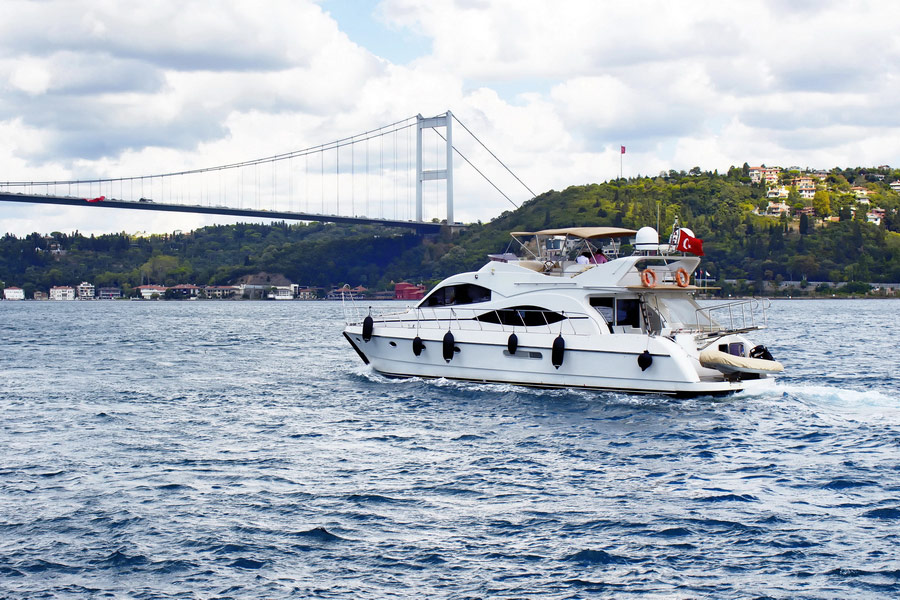
Cruising the Bosphorus Strait in the evening, when Istanbul’s waterfront sights are lit up for all to see, is one of the best things to do in Istanbul at night. A three-hour cruise allows one to see the city’s most iconic landmarks at their illuminated best, including the Dolmabahçe Palace and the Maiden’s Tower lighthouse, the lovely Rumelihisarı Fortress (or Boğazkesen Fortress), and the Ortaköy Mosque (formally the Büyük Mecidiye Camii). For those seeking a more luxurious experience, longer Bosphorus cruises are also available, offering extended itineraries with premium services, gourmet dining, and an even more immersive exploration of Istanbul's stunning waterfront.
Some cruise vendors offer an evening of sumptuous Turkish food, traditional folklore performances, and belly dance shows. Jazz enthusiasts may also find a boat trip to take in Istanbul’s skyline as they make their way through a sophisticated meal and enjoy jazz tunes from a live performer.
2. Bath in the Authentic Turkish Hammam
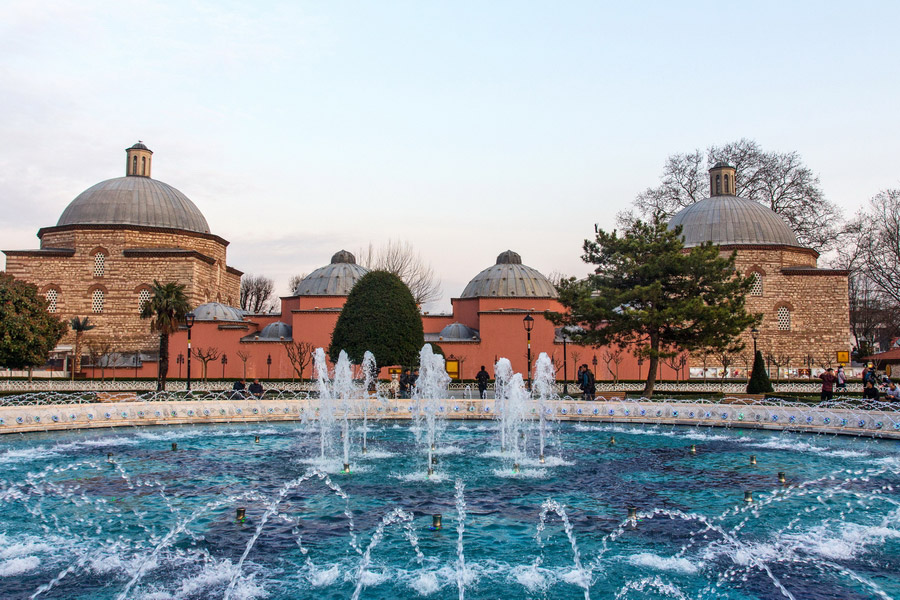
The hammam (hamam), a Turkish bath, is loved by both Turkish people and foreign visitors. Almost every hotel in Turkey features hammams, which are frequented by clientele. However, the most authentic Turkish baths are found in historical hammams, showcasing genuine architecture, glimmering marble, and delicate carvings. These structures, inspired by ancient Roman baths, were subsequently adopted by the Ottomans and emphasised the Islamic rituals of cleanliness and personal hygiene. Several historical hammams in Turkey are open to the public.
In Istanbul, the Kılıç Ali Paşa Hamamı, built in 1580 by the Great Architect Mimar Sinan, is among the best examples of classical Ottoman architecture, while the Zeyrek Çinili Hamamı, built in 1530 also by Mimar Sinan, introduces newcomers to its artistic tiles (Çinili) and on-site museum that reveals the history of hammam culture. The famous Cağaloğlu Hamamı, built in 1741, was, among others, the last grand bath commissioned before the decline of the Ottoman Empire. As guests walk through the building, they observe intricate marble décor and baroque-style woodwork. The regal Hurrem Sultan Hamamı, commissioned by Suleiman the Magnificent at the request of his wife Hurrem Sultan (Roxelana) and built by Mimar Sinan, too, is a true marvel of opulent luxury and elegance. It is a great place to unwind after a long walking tour of the city.
Beyond Istanbul, the 16th-century Şengül Hamamı in Ankara boasts a striking dome and exquisite stonework. This historic bath is well-suited for conservative travellers who prefer private bath suites. In Bursa, the hammam in the historic Koza Han caravanserai combines the essence of ancient hospitality with a picturesque atmosphere.
3. Pray in an Atypical Mosque in Istanbul
Istanbul is home to over three thousand mosques, and one of the atypical is the underground Sancaklar Mosque (Sancaklar Camii), situated seven meters below ground in the Büyükçekmece district on the European side of the city. What sets this mosque apart extends beyond its subterranean design. Unlike Istanbul’s iconic historical mosques, the Sancaklar Mosque was built in 2011 and designed by Emre Arolat, showcasing a bold, modern approach. Instead of the traditional dome and minaret, it features minimalist lines of grey stone and cement, fostering a contemplative atmosphere.
4. Go Skiing in Uludağ
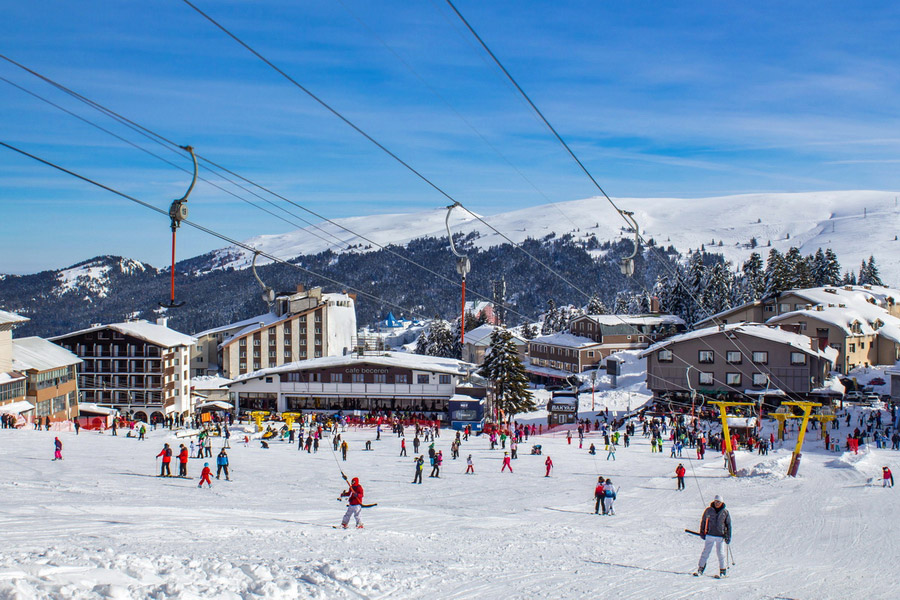
Nestled just 35 kilometres from Bursa, Uludag Ski Resort boasts a storied history in alpine skiing. Over the years, it has become a favoured destination for tourists from across Europe, particularly those from the CIS countries. The resort's popularity is fuelled by its exceptional services, including 15 first-class hotels that provide all-inclusive meals. Visitors also appreciate the resort’s comprehensive infrastructure, rejuvenating mineral springs, and the stunning natural landscapes that surround them.
A unique feature of Uludağ Ski Resort is that nearly every hotel operates its own ski lifts, with access included in the accommodation package.
Uludağ is especially ideal for families travelling with children. Young skiers can take their first turns under the watchful eye of experienced instructors, ensuring a safe introduction to the sport. The combination of excellent facilities, breathtaking scenery, and family-friendly amenities makes Uludağ Ski Resort a perfect winter getaway for all ages in Turkey.
5. Experience Gastronomic Adventures in Turkey
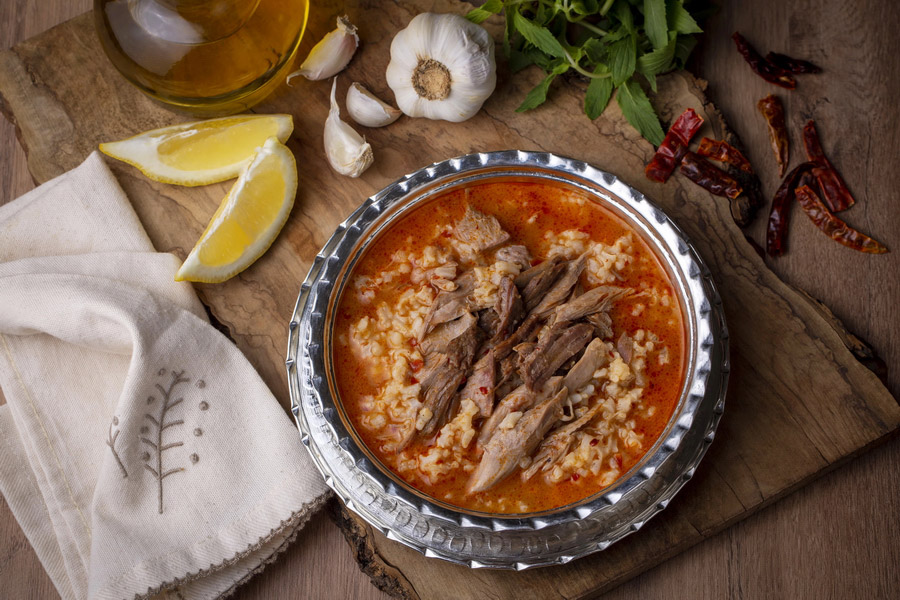
Turkey’s culinary richness is exemplified by its UNESCO-designated “Cities of Gastronomy”: Gaziantep, Hatay, Afyonkarahisar, and Kayseri. Gaziantep, recognised in 2015, prides itself on its dishes, such as beyran soup (beyran çorbası) and its world-renowned baklava. Hatay, honoured in 2017, invites voyagers to a rare blend of flavours, influenced by Arabic dishes such as mütebbel, including the tepsi kebabı and beloved künefe dessert. Afyonkarahisar, added in 2019, is celebrated for its flavourful sucuk (spiced and fermented sausage), Turkish delight, and rich clotted cream desserts. Each city demonstrates the diversity of Turkey’s cuisine, inviting food enthusiasts to indulge in the country’s multifaceted gastronomic culture.
Notably, the Michelin Guide has been confirming the growing prestige of Michelin Star-awarded restaurants in Turkey. The 2025 Michelin Guide highlights 13 starred establishments, including newcomers Casa Lavanda near Istanbul and Narımor in Izmir. Renowned favourites like Mikla and Nicole in Istanbul, along with Kitchen by Osman Sezener in Muğla, retained their prestigious stars. Sustainability shines with six Green Star awards, including The BARN and Mezra Yalıkavak. All of these outstanding restaurants are well worth the visit.
6. Take a Luxury Gulet Cruise Along the Turkish Aegean
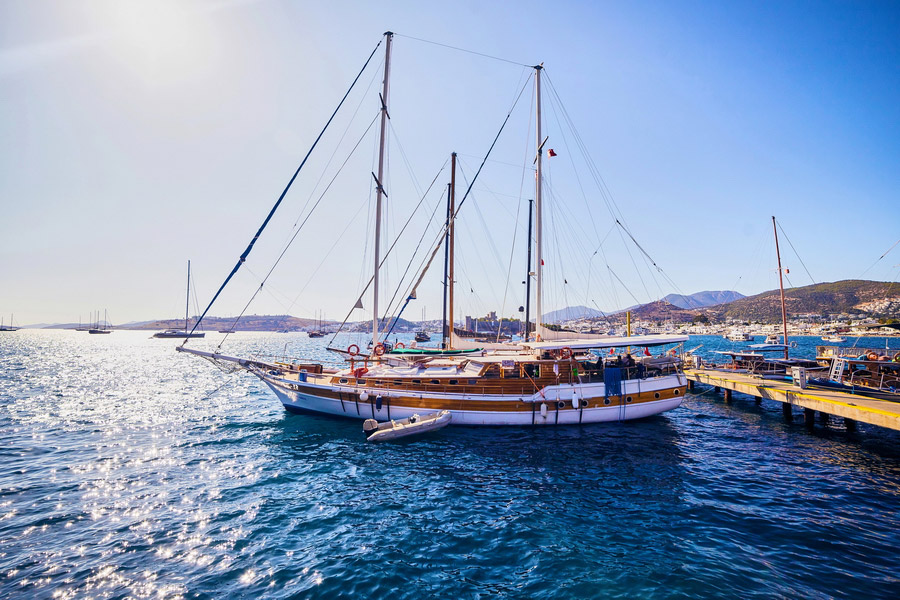
One of the best activities in Turkey during the summer and early autumn is a gulet cruise. These traditional two- or three-masted wooden sailing vessels originated in Turkey in the mid-20th century. The term “gulet” is thought to derive from the French “goélette” and later the Venetian “galiote,” although it now commonly refers to motor sailers that ply the Aegean and Mediterranean seas.
Gulets are ideal for intimate, short-term cruises. Unlike massive liners that cover multiple countries in a week, gulets allow travellers to reconnoitre Turkey’s authentic charm of hidden bays, coves, and historic small ports inaccessible to large ships.
A gulet cruise blends an instructive journey with a laid-back beach holiday. Guests can relax on deck, explore secluded beaches, and take refreshing swims in the inviting waters. Onboard, chefs serve meals with a distinctive Turkish flair, often fresh seafood such as fish, shrimp, and lobster. Departing from towns such as Kaş, Marmaris, Göcek, Bodrum, Fethiye, and the Bozburun Peninsula (Bozburun Yarımadası), a gulet yacht cruise promises a memorable way to appreciate Turkey’s coastal beauty and traditions.
7. Fly Paragliding Over the Blue Lagoon in Ölüdeniz
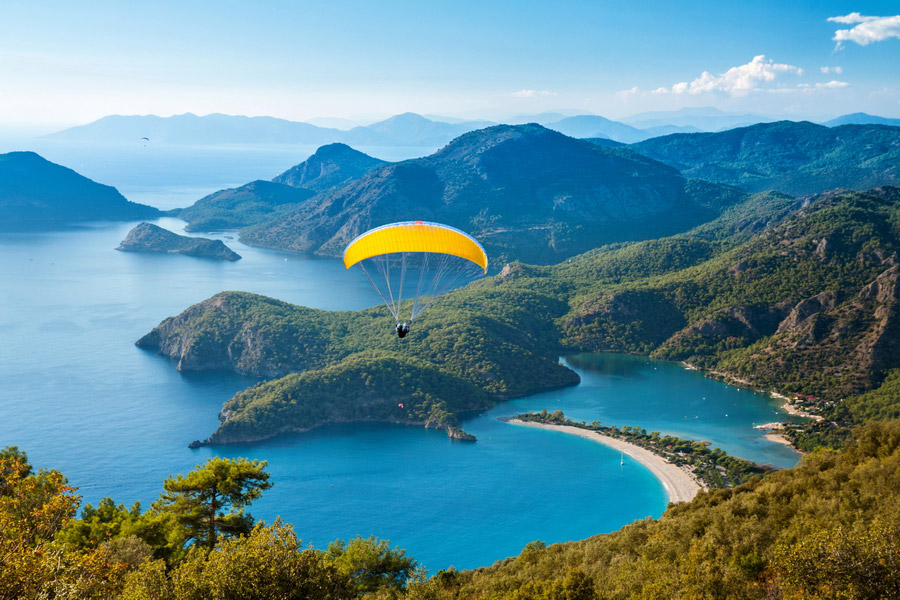
At any time of day, a glance skyward in Ölüdeniz, a national reserve in Fethiye, Muğla Province, reveals dozens of vibrant paragliders gracefully soaring above the sea. This picturesque spot attracts enthusiasts from Europe and other continents. The sport has become a prominent option for visitors to the region, thanks to the amazing views over the Blue Lagoon from approximately 2,000 meters above ground.
8. Trek the Lycian Way
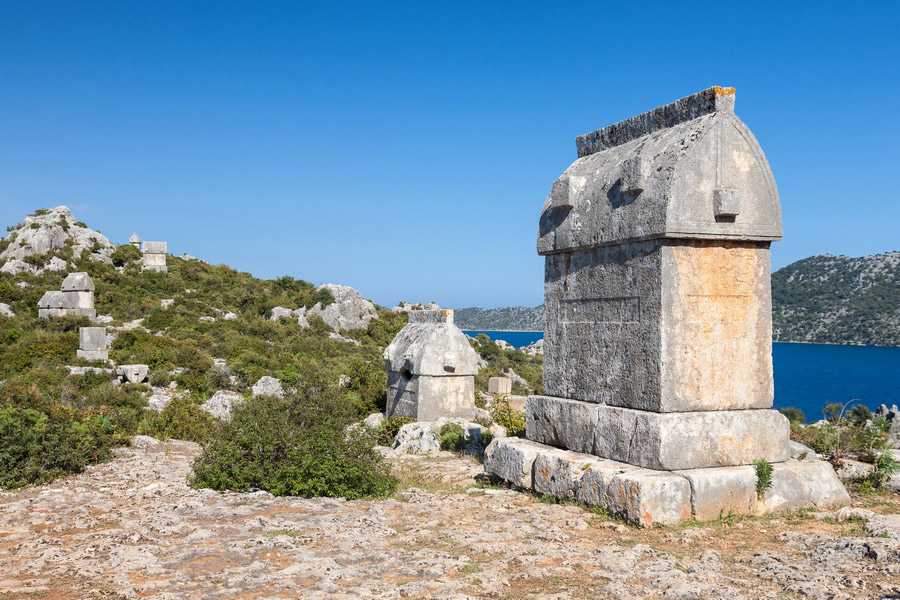
The Lycian Way is a picturesque route along the Mediterranean coast, weaving through the heart of Turkey’s ancient Lycia from Fethiye to Antalya. British expatriate Kate Clow researched, designed, and waymarked the route in 1999.
Its unparalleled richness in landscapes and heritage sets the Lycian Way apart. Along the path, hikers encounter the ruins of ancient cities steeped in myth and legend, turquoise beaches where sea turtles nest, rugged mountains dotted with grazing goats, and spectacular coastal views. Besides, the trail reveals fascinating wonders such as the eternal flames of Chimaera (Yanartaş), mysterious underwater cities, and the rock tombs of ancient kings carved into sheer cliffs.
The Lycian Way is accessible even to novice hikers due to the convenience of nearby settlements, campsites, local cafés, and reliable transport. Completing the entire route takes approximately a month. However, visitors can choose to hike shorter stretches of the 520-kilometre trail.
9. Stay with a Local Family in the Prettiest Villages and Small Cities
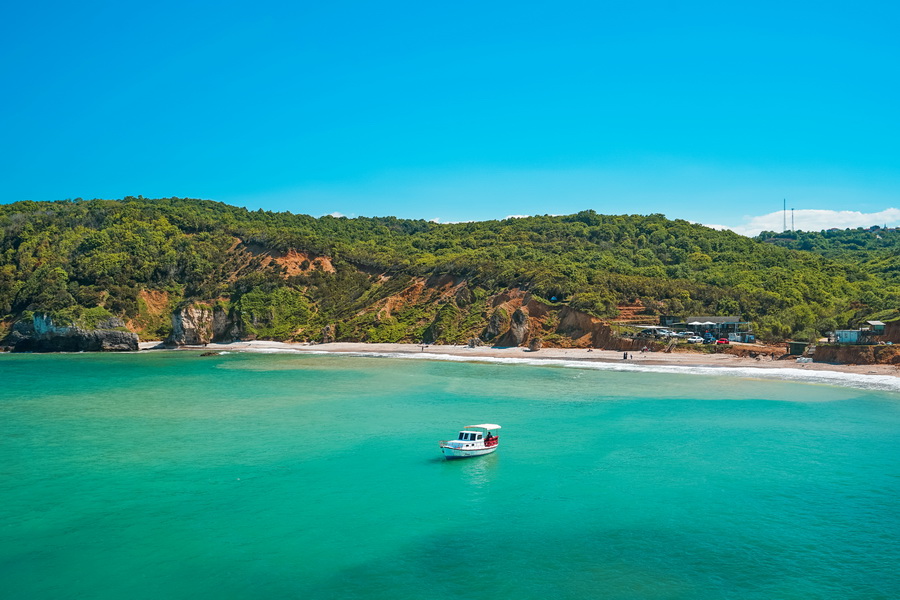
Turkey’s small towns are just as worth visiting as its bustling cities. 45 minutes from Istanbul lies Şile, a picturesque coastal town on the Black Sea, renowned for its stunning views and historic lighthouse. A 30-minute drive from Şile takes travellers to Ağva, a laid-back resort village cradled by rivers, lakes, and forests.
In the Izmir region, sightseers should not miss the enchanting villages of Şirince, and Alaçatı. The latter is known for its architecture and 150-year-old windmills. Both are nestled near the ancient city of Ephesus (Efes) and boast rural colours, rich history, and a serene atmosphere. Farther afield is Birgi, just two hours from Kuşadası, and regarded as a living open-air museum.
Meanwhile, beach enthusiasts in Fethiye can discover the peaceful village of Yanıklar, 15 minutes away. Surrounded by the natural beauty of Muğla Province, this hidden gem is a perfect escape from the lively port city.
10. Tour the Silk Road Caravanserais in Turkey
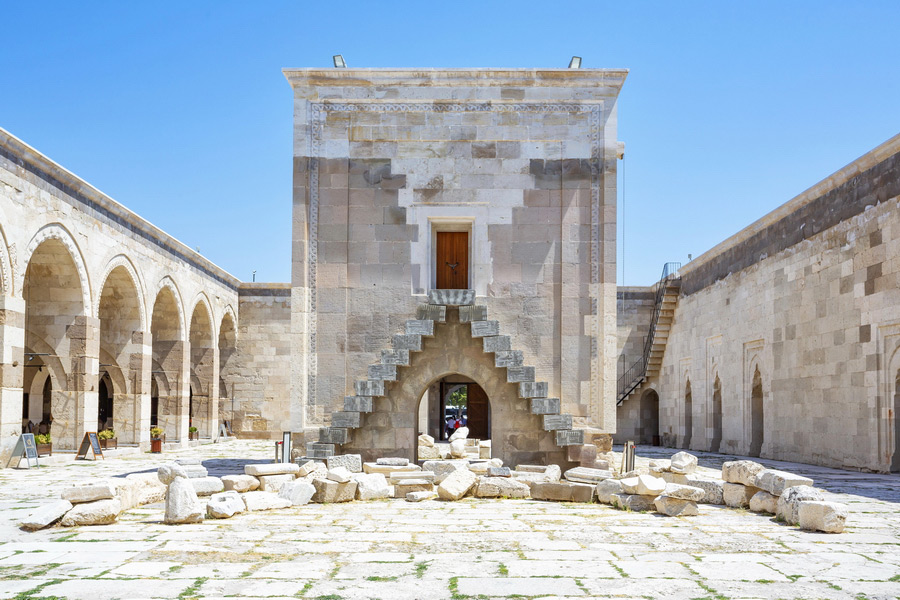
The Silk Road caravanserais in Turkey are where history and architecture intertwine. These ancient inns, once vital rest stops for traders and travellers traversing the Silk Road, offer a glimpse into the region’s rich cultural heritage. Notable caravanserais such as the Seljuk Sultan Han Caravanserai near Aksaray, the Hasan Pasha Han (Hasan Paşa Hanı) in Diyarbakır, and the Kürkçü Han Caravanserai in Istanbul showcase thrilling Ottoman architecture with their grand courtyards, stonework, and spacious halls. While walking through these preserved sites, it is easy to imagine the bustling activity of merchants from distant lands exchanging goods and stories.
Many caravanserais have been thoughtfully restored and now serve as vibrant centres for cultural events, boutique hotels, and artisan shops, allowing visitors to immerse themselves in both history and modern-day charm. Excursions along Turkey’s Silk Road caravanserais highlight the enduring legacy of this ancient trade route.
11. Shoot at the Traditional Archery Session

Tourists visiting Turkey have a unique opportunity to experience the country's traditional sport – archery, which is recognised by UNESCO as an Intangible Cultural Heritage. Archery has deep historical roots, but it gained prestige during the Ottoman Empire. It was considered the sport of sultans, a discipline truly befitting a great ruler. The craftsmanship involved in making a traditional Turkish bow was remarkable, and mastering the skill of shooting required years of dedicated practice.
Today, archery remains a celebrated sport in Turkey, with clubs found in nearly every city. Turkish archers regularly compete on the international stage, including the Olympic Games. One of the most renowned athletes is Mete Gazoz, who won a gold medal at the 2020 Tokyo Olympics, and a gold medal at the 2023 World Archery Championships, among many other awards.
12. Taste Turkish Wine
The Aegean region of Turkey is renowned not only for its pristine beaches but also for its thriving vineyards. As one journeys through this captivating area, the expansive vineyards become a striking feature of the landscape. Local vintners are diligently working to revive nearly extinct indigenous grape varieties, fostering a burgeoning wine industry steadily gaining recognition within Turkey. Interestingly, Turkey ranks as the fifth-largest country globally for vineyard acreage, boasting over 1,400 distinct berry varieties. Consequently, embarking on a wine tour is an unmissable thing to do in Turkey for any discerning traveller.
Among the most prominent destinations for wine enthusiasts is Urla, a charming district in Izmir. Here, wine tourism takes centre stage. The Urla Wine Road (Urla Bağ Yolu) beckons with the exceptional opportunity for connoisseurs to savour superb local wines and purchase vintage bottles directly from producers, ensuring an unforgettable journey into Turkey’s wine culture. Wine lovers can also explore The Thrace Wine Route (Trakya Bağ Rotası) in northwest Turkey and The Çal Vineyard Route (Çal Bağ Yolu) in Denizli.
13. Shop for Traditional Turkish Handcrafts
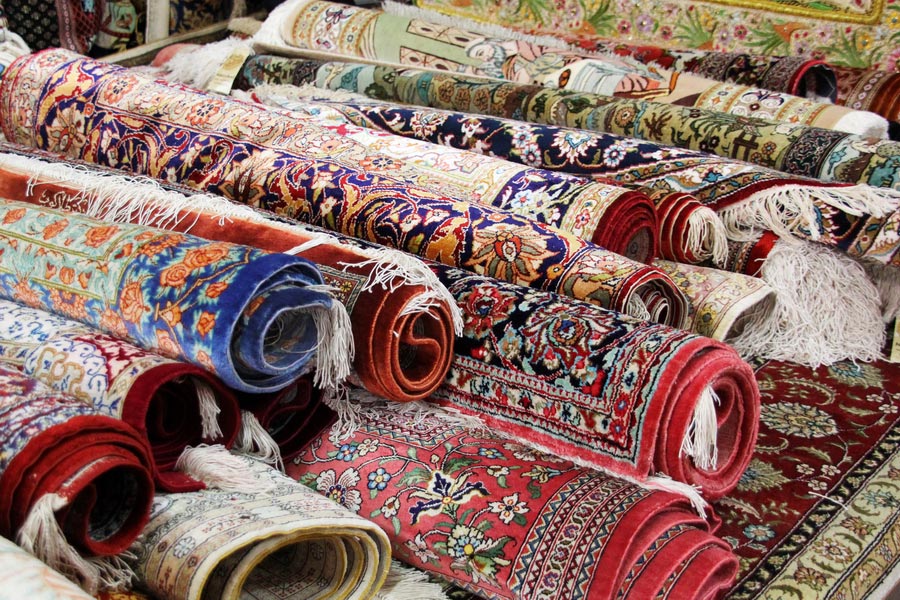
The best souvenirs in Turkey include locally produced creations that are unavailable elsewhere, such as handwoven carpets, intricate jewellery, ceramics, and traditional textiles.
Turkish-themed jewellery made from gold and sterling silver is readily found at bazaars and gift shops.
Meerschaum (sepiolite) pipes (Lületaşı Piposu), famed for their natural filtering properties, are highly sought after. Some feature elaborate designs and hold significant value. These Turkish smoking pipes are stocked at the Grand Bazaar in Istanbul and can also be sourced online. The Eskişehir Meerschaum Museum (Eskişehir Lületaşı Müzesi) in Odunpazarı exhibits a wide collection of about 400 pieces. It is located within the historic Kurşunlu Complex (Kurşunlu Külliyesi), with Ottoman architecture, which also houses a handicraft bazaar.
A backgammon board, especially those inlaid with mother-of-pearl – a traditional Turkish craft, inscribed on the UNESCO Representative List of the Intangible Cultural Heritage of Humanity for Turkey and Azerbaijan – makes a memorable keepsake. Similarly, ornately decorated Ottoman-style Turkish daggers (hançer) can serve as impressive gifts and are typically sold in souvenir shops and online.
Alternatively, shoppers might consider Şile bezi, handmade cotton tops produced in Şile and widely available at local bazaars.
Other excellent souvenirs from Turkey are Turkish carpets (kilim) and ceramics. Purchasing rugs and ceramics in Cappadocia is advisable, as the region caters to high-quality handmade goods with more affordable prices than in Istanbul.
The Grand Bazaar handcrafts can be purchased online through various websites, providing an accessible option for those unable to shop in person.
14. Learn About Olive Oil Production in Turkey
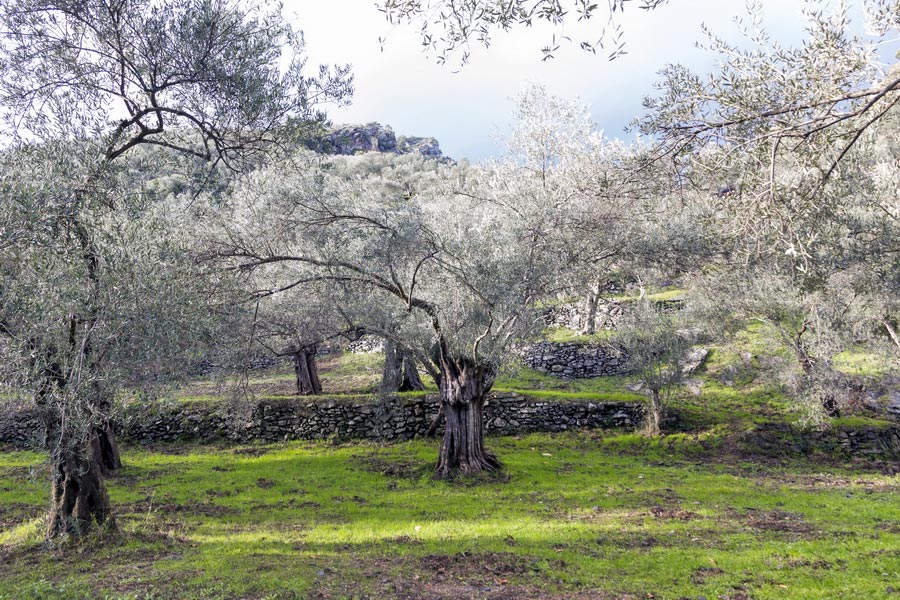
Turkey, historically the fifth-largest oil producer, became the second-largest in 2023 after Spain. At the 2024 NYIOOC World Olive Oil Competition, Turkey won 29 awards (18 Gold and 11 Silver) out of 52 industry prizes. Therefore, it is no wonder that olives are such an important ingredient in Turkish cuisine. Moreover, the country affords instructive olive excursions about the production of extra virgin oil.
Where should one head for olive tours? Olive groves in Turkey span across numerous regions. One that particularly shines is the Aegean region. Visiting olive museums, such as the Köstem Olive Oil Museum (Köstem Zeytinyağı Müzesi) in the village of Uzunkuyu in İzmir Province, which is also the largest olive museum in the world, and the Oleatrium Zeytin ve Zeytinyağı Tarihi Müzesi in Aydın Province, near Kuşadası, sheds light on cultivation, harvesting, and traditional olive oil production.
In Ayvacık, in the Marmara region of Turkey, visitors can stop by the Adatepe Olive Museum (Adatepe Zeytinyağı Müzesi), housed in a former soap factory. Through the exhibits, guests witness olive oil's traditional extraction and sample various labels of the local “liquid gold.”
15. Attend the Turkish Storytelling with Meddahs
Turkey has a well-developed and modern theatre scene in many cities across the country. However, for those seeking a traditional interaction, attending a performance by a meddah – a traditional Turkish public storyteller – is highly recommended. The term derives from a word meaning "praise," and these storytellers can be likened to contemporary stand-up comedians. This art form, known as Meddahlık, dates back to the 16th century. While non-Turkish-speaking visitors may not grasp the details, they can still appreciate the lively storytelling style of meddah.
Meddahs often weave their narratives around a wide range of topics, focusing on moral lessons while incorporating humour. In recognition of its cultural significance, the art of the meddah was inscribed in 2008 on UNESCO’s List of Intangible Cultural Heritage of Humanity. Remarkably, more than five centuries later, the tradition endures. For instance, during Ramadan, visitors might still come upon a meddah spinning captivating tales in a coffee shop in eastern Anatolia.
Furthermore, performances by meddahs can be observed at various theatre festivals, including the Istanbul International Theatre Festival in November, the International Sabancı Theatre Festival in spring, the Istanbul Fringe Festival in September, and the Antalya International Theatre Festival in May. Additionally, they are often featured at traditional celebrations, such as Hıdırellez and Nevruz (Nowruz). The İstanbul Büyükşehir Belediyesi (IBB) Şehir Tiyatroları regularly presents meddah performances.
16. Embrace Turkish Coffee Culture to Know Your Future
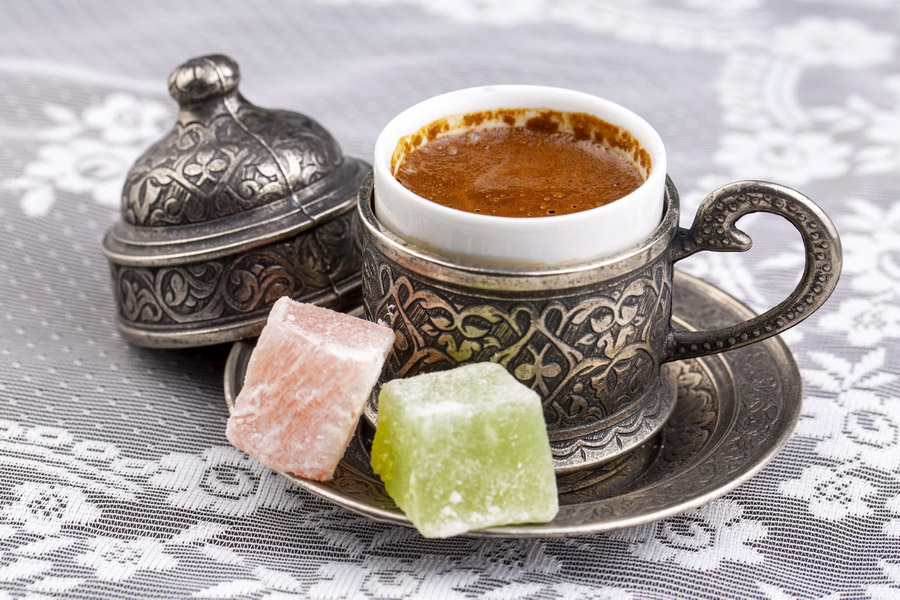
In Turkey, coffee is a widely adored beverage with roots dating back to the 16th century. The drink is brewed in a special kettle called a cezve; UNESCO has recognised this exclusive brewing method. Another curious aspect of Turkish coffee (Türk kahvesi) is that the grounds are boiled over low heat. The coffee, served in small cups and traditionally made on hot sand, is consumed after the grounds have settled.
Coffee drinking in Turkey is always about socialising, hospitality, and friendship. There is a custom of fortune-telling (tasseography) using coffee grounds. This involves interpreting patterns formed after the cup is turned upside down onto the saucer. Although it is often purely a form of entertainment, some individuals take fortune-reading very seriously. Interestingly, millions of Turks are diving into the digital future of fortune-telling, subscribing to apps that conjure AI-driven coffee readings or link them with virtual seers.
It is possible to attend a Turkish Coffee on Sand and Fortune-Telling with Gift Set workshop in English in Istanbul, which includes coffee sampling. Additionally, visitors can take a Bosphorus Private Yacht Cruise With Tea and Coffee.
Turkish coffee can be enjoyed in traditional coffee houses and major bazaars across the country. Coffee lovers can likewise get insight into Turkish coffee culture at the following Turkish coffee festivals: Istanbul Coffee Festival (Istanbul Kahve festivali), Ankara Coffee Festival (Ankara Kahve Festivali), and Antalya Coffee Feast. A truly smoky coffee can be savoured in Bursa.
17. Appreciate and Acquire Turkish Tea
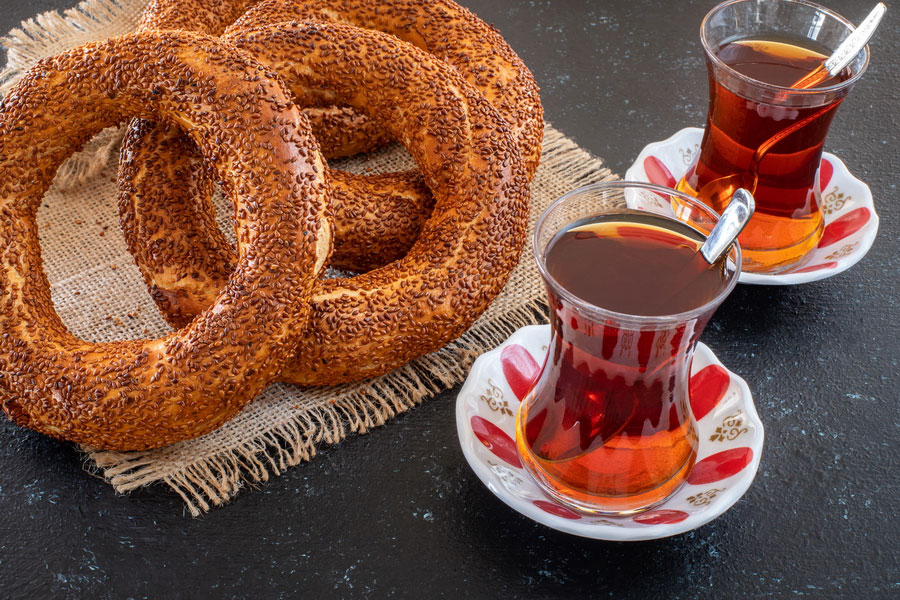
Few people realise that Turkey is not only a nation of coffee lovers but also one of discerning tea enthusiasts. Turkish tea, or çay, is deeply embedded in the culture, symbolising hospitality and social connection. Turks drink tea throughout the day, from sunrise to sunset, with no such thing as a “wrong time” for a cup. In fact, Turkey surpasses even the United Kingdom in daily tea consumption.
Visitors shopping in Turkey are often offered tea served in small, tulip-shaped glasses – a warm gesture of hospitality. Accepting this simple token is a way to embrace the country’s tea culture.
The Black Sea Region, particularly the city of Rize, is the heart of Turkey’s tea production. Renowned for its lush plantations and high-quality black tea, Camellia sinensis sinensis (Yunnan); this region produces the tea that fuels Turkey’s renowned tea culture. Tea here is harvested manually with pruning shears and placed in bags that are collected by truck at the end of the day. From the harvest, 8 tonnes of fresh tea produce approximately 400 kg of dry tea. The main factory in Rize belongs to the state company, Çaykur, a key player in Turkey’s tea industry.
For a closer connection to this tea heritage, visitors can head to the Ziraat Botanic Tea Garden (Ziraat - Botanik Çay Bahçesi) in Rize, promising not only stunning views of the region’s tea plantations but also tea tastings, providing a perfect opportunity to savour the flavours of Turkish tea at its source.
18. Take Turkish Marbling – Ebru Classes
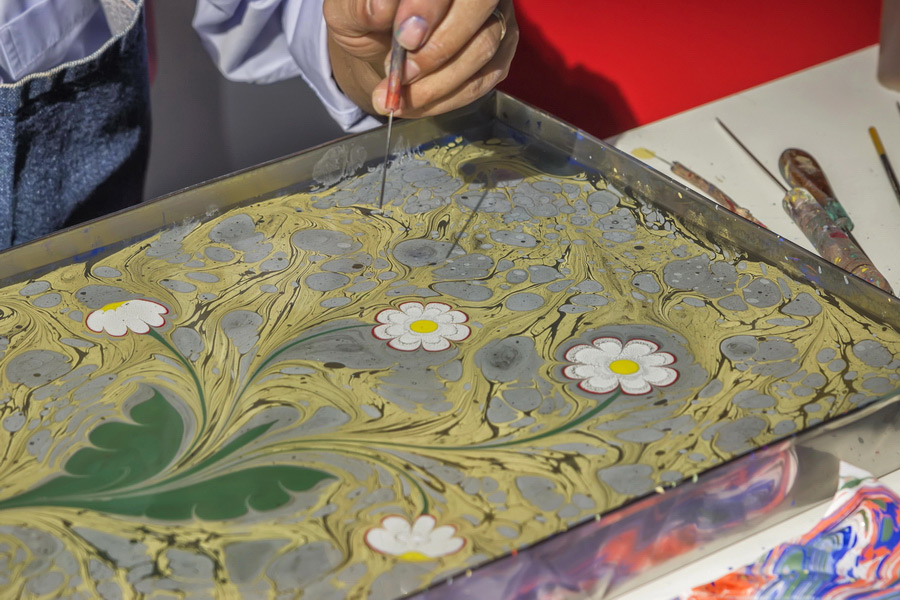
Ebru, a traditional Turkish art form, was classified as an Intangible Cultural Heritage in 2014 by UNESCO. Art enthusiasts can participate in Ebru workshops. Donned in aprons, they will learn how to deposit colours onto the water and manipulate them in various methods to create something beautiful that can be transferred onto paper.
Ebru emerged and flourished in the Ottoman Empire, and the floral marbling style, especially the tulip, is a popular pattern. Visitors can take marbling classes in Istanbul, particularly in cultural centres such as the Caferağa Medresesi, a historic art school in a madrassah near Hagia Sophia (Ayasofya). In Konya, travellers can join Ebru marbling sessions at local art studios. In addition, the city of Bursa hosts Ebru workshops in its cultural and art centres. Some of the workshops deliver certificates to the participants, and many courses are available in English.
19. Bake Turkish Flatbread
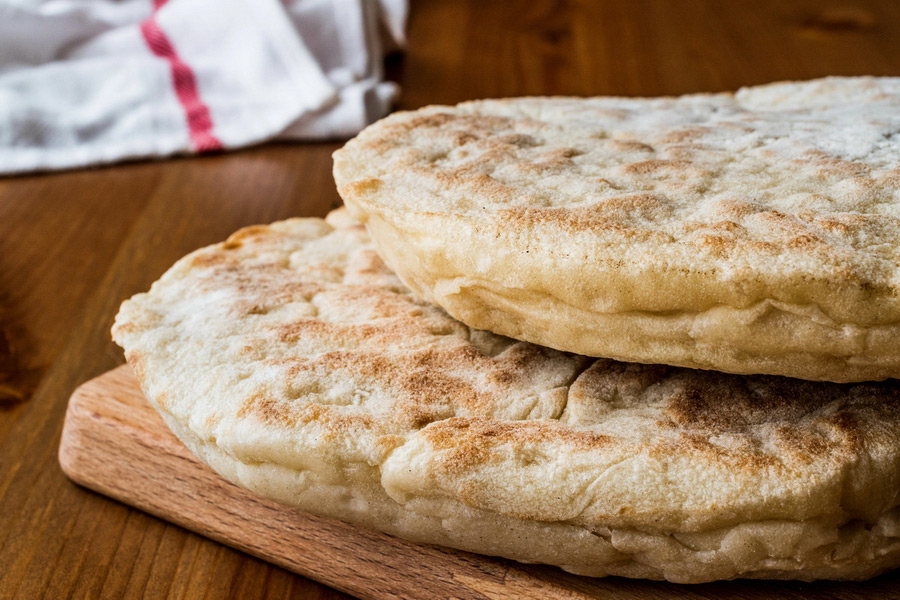
For those looking for recipes at home, learning the secret of making delicious Turkish flatbread is invaluable. Given Turkey’s abundance of high-quality bakeries and restaurants, baking classes are widely available in Turkey’s cities. During a cooking class, participants can learn how to make lavaş (leavened flatbread) and yufka (unleavened dough). In 2016, these two types of flatbreads entered UNESCO’s List of the Intangible Cultural Heritage of Humanity. Additionally, the Bazlama (leavened flatbread) is commonly baked everywhere in Turkey.
Anyone can book an online cooking session with a Turkish chef when they are back home and want to hone their baking skills.
20. Explore Turkey’s Traditional Calligraphy
Almost everyone visiting Turkey has observed Hüsn-i Hat – a UNESCO treasure, traditional calligraphy in Islamic art with Arabic origins. Some have seen it adorning the walls of mosques, others the interior and exterior of Turkish baths, and still others in the script used to inscribe the Noble Qur'an.
Islamic art enthusiasts can take calligraphy classes in Istanbul from local artists – hattats. These workshops provide technical guidance on crafting the delicate strokes of Hüsn-i Hat, as well as insights into its historical and aesthetic significance. Many classes are held in inspiring settings, such as historic art studios and cultural centres. Guests will learn about different styles, such as muhakkak, sülüs, dîvânî, and traditional tools, like a reed pen, an inkwell, and a pen case.
Davut Bektaş, a Turkish calligrapher (hattat), holder of many awards, has been exposing his artwork for many years in various countries. He also teaches calligraphy as a lecturer at the Faculty of Fine Arts at Fatih Sultan Mehmet Waqf University in Istanbul. His artwork can be seen on the Internet in virtual galleries.
21. Learn the Gold Leafing Technique
The intricate patterns of illumination are created using the tazhib (also spelt tezhip or tazhip) technique, a centuries-old art form that originated in Central Asia. The word tazhib comes from Arabic and means "painted with gold." In December 2023, this tradition was added to UNESCO’s World Heritage List.
Tazhib involves the skilful painting of plant motifs and geometric shapes, which often carry symbolic meaning. Historically, it was used to decorate the Noble Qur'an, royal decrees, and other important documents. Masters would apply patterns and highlight them with gold to emphasise their significance.
Today, tazhib is no longer limited to manuscripts. The technique is now used to adorn dishes and even standalone paintings, keeping this ancient art alive in contemporary art and design.
You may attend an online workshop with Şeyma Çınar, who teaches online at the Istanbul Design Centre (Istanbul Tasarım Merkezi), and she also gives lectures at her own art studio. In addition, the Bazaar of Istanbul Arts (Istanbul Sanatları Çarşısı) sells tazhibs and other pieces of art created by craftsmen performing in this centre. Calligraphy is inseparable from the illuminated manuscript; it can be verified at the Topkapı Palace Library, where a Noble Qur'an page dated 1131 is visible.
22. Watch Whirling Dervishes
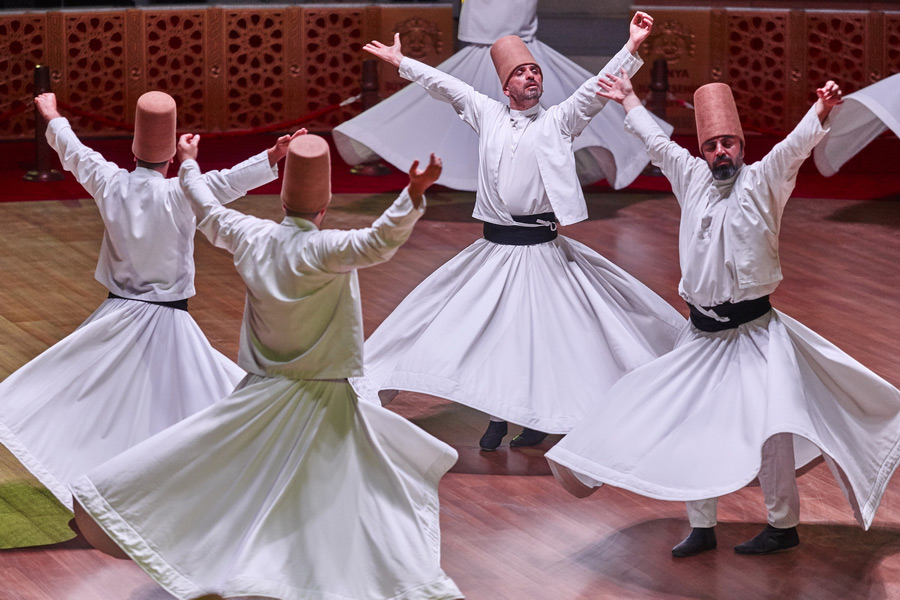
The whirling dervishes (“sema” in Turkish) represent a mystical ceremony and part of the outstanding heritage of Islamic culture. In 2008, the sema ritual was inscribed on UNESCO’s List of Intangible Cultural Heritage.
The dervish ceremony harkens back to the city of Konya and spans more than 800 years. It was inspired by the illustrious Islamic poet and mystic Jalāl al-Dīn Muḥammad Rūmī (1207-1273), a theologian and spiritual Sufi teacher.
Tourists can attend a whirling dervish show in Istanbul at the Hodjapasha Culture Centre. The Sirkeci Railway Station (Sirkeci Garı) is another popular venue for watching the ceremony. This historic rail station is mentioned in Agatha Christie's novel “Murder on the Orient Express.”
23. Attend the Sıra Night in Şanlıurfa
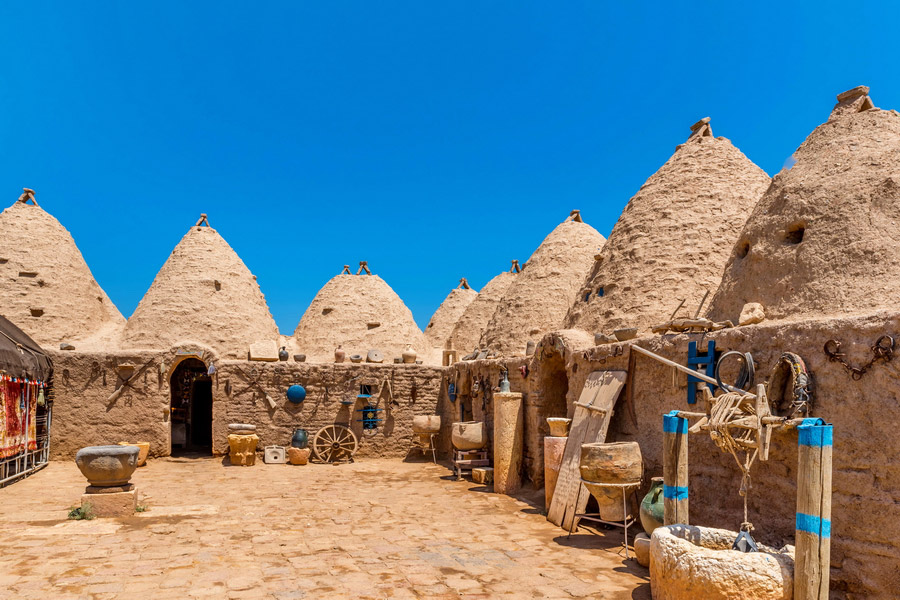
For those searching for authentic places, a visit to Turkey’s southeastern city of Şanlıurfa is a must. During the day, visitors can uncover the rich history of ancient civilisations by exploring the Neolithic wonders of Göbeklitepe and Karahantepe while also taking in the beauty and heritage of this culturally vibrant city. In the evening, they can join a traditional sıra gecesi – a lively gathering where locals come together to share food, sing, and dance the halay to the rhythms of traditional musical instruments.
24. Travel to Edirne for the Kırkpınar Oil Wrestling Festival
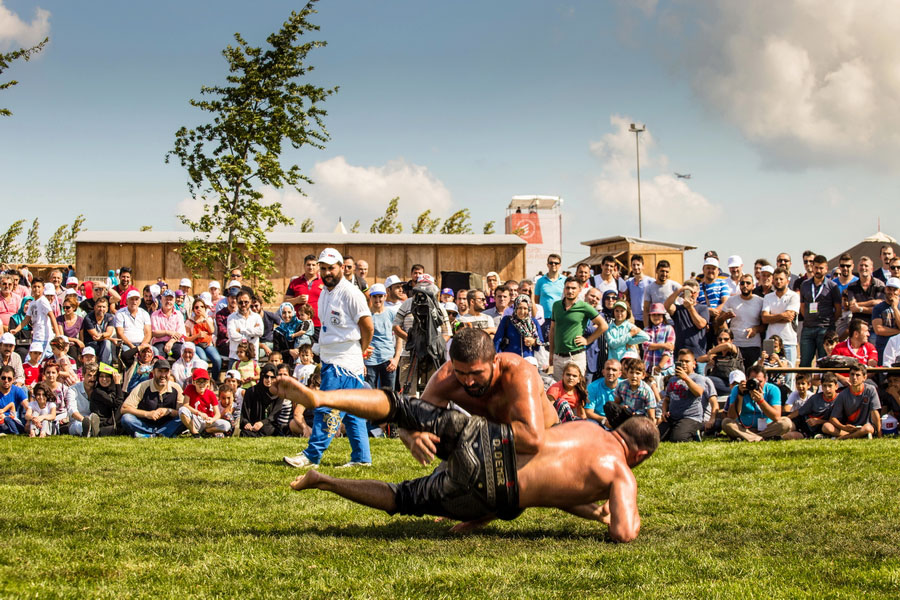
The Kırkpınar Oil Wrestling Festival is the oldest competition in Turkey, held annually in July in Edirne. The hallmark of the event is its open-air oil wrestling. Pehlivans (wrestlers) rub their bodies with oil and fight each other, aiming to topple their opponent on the ground. The winner earns the title of başpehlivan along with the golden belt and a monetary prize.
The Kırkpınar oil wrestling (Yağlı güreş) dates back 600 years. It was established to honour the victory of the Turkish army over Greek forces in 1362.
The festival also includes concerts, markets, and other forms of entertainment. Tourists can try local cuisine and purchase souvenirs.
25. Go on a Winter Voyage on the Eastern Express

An unrivalled view of forests, valleys, rivers, deep canyons, and the rocky terrain of Anatolia awaits adventurers aboard the Eastern Express (Doğu Express), which runs from Ankara to Kars near the border with Armenia. The entire journey takes 26 hours; the major stops are Kayseri, Sivas, Erzincan, and Erzurum. The new Touristic Express, launched in April 2024, added two additional lines: Ankara-Diyarbakır and Ankara-Tatvan. This train is in high demand during the winter season, as the snow-capped countryside evokes a fairy-tale atmosphere. The highlight of the journey is a sleigh ride on the frozen Lake Çıldır.
26. Ride Hot Air Balloons and Camels in Cappadocia

A hot air balloon ride is one of the essential things to do in Cappadocia, rendering a sense of magic that is difficult to put into words. “It feels like you are floating in the void, and the whole world is at your feet,” some say. As dawn breaks, painting the sky in soft shades of pink and orange, the balloons gently ascend. The morning air is crisp and cool, and the world grows quiet. Only the occasional whoosh of the burner and the soft rustling of the breeze break the stillness. Below, the landscape transforms into a breathtaking tapestry of ancient ruins, while the sky above comes alive with balloons drifting like colourful blossoms in the golden light of the rising sun.
Additionally, camel safari tours and horse-riding tours are alternatives for those who prefer to keep their feet on the ground. Riding these animals through Cappadocia while watching the ballet of air balloons is a mesmerising sight.
27. Feel the Magic of Ancient Ephesus
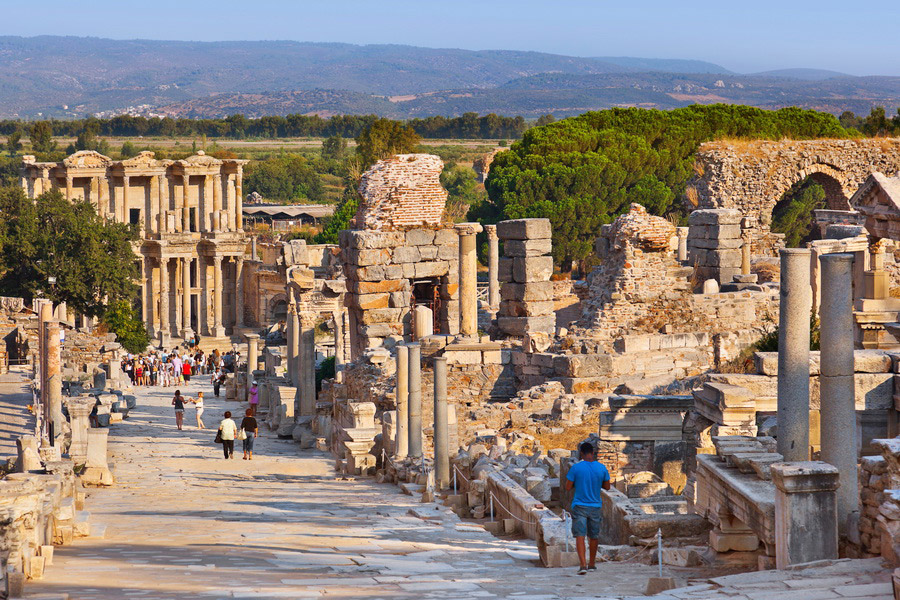
Marble streets, the elegant columns and sculptures of Celsus Library, the grandeur of the amphitheatre that could seat 25,000 people, and the impressive interactive movie transport vacationers to two thousand years into the past. According to the Ephesus Archaeological data, 2.2 million people visited the ruins of the ancient city in 2023. Despite being crowded, this is a must-visit destination in one’s life. To make your visit even more incredible and unforgettable, you may download on your phone the app that allows you to take the virtual tour in 3D while you visit the site.
28. Take a Trip to Ahlat Stonework
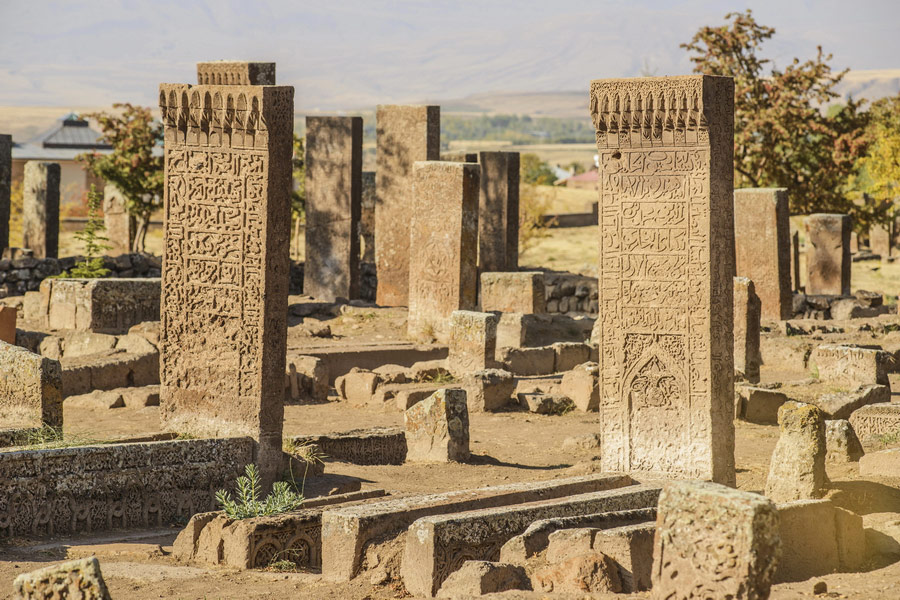
Just when one thinks they have seen all that Turkey has to offer, another hidden gem awaits discovery. The city of Ahlat, in Bitlis Province, is the birthplace of stone carving, a traditional Turkish art form that earned a spot on UNESCO’s list in 2022. This ancient craft has been practiced for thousands of years, shaping remarkable structures across the region. Nestled near Mount Nemrut, where the distinctive stone is quarried, callers in Ahlat can marvel at carved historic Seljuk tombs and meet artisans who continue to breathe life into this ancient art. To help preserve this ancient heritage, you may order small or larger pieces of work from local artisans to uniquely decorate your home.
29. Make the Pilgrimage to the Seven Churches of Apocalypse
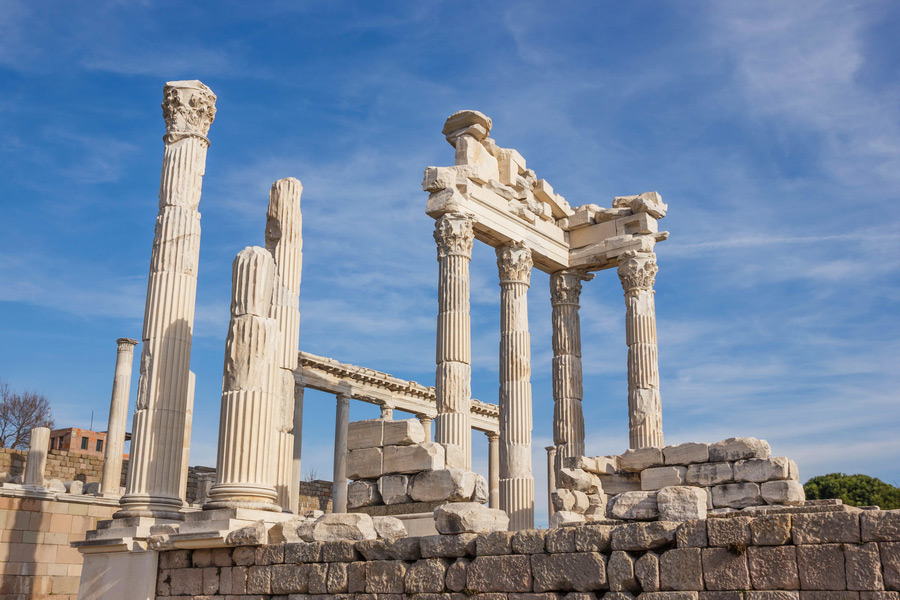
For those who want to tour biblical Turkey, the Seven Churches of the Apocalypse tour affords an unforgettable journey. This unique route takes one through some of the most significant centres of early Christianity in Asia Minor, including Bergama (Pergamum), Izmir (Smyrna), Selçuk (Ephesus), Salihli (Sardis), Alaşehir (Philadelphia), Eskihisar (Laodicea), and Akhisar (Thyatira).
According to the Bible, while he was on the island of Patmos, the Evangelist John received the extraordinary vision about the spiritual situation of the Seven Churches that is recorded in the Book of Revelations. His mystical words continue to draw thousands of tourists and pilgrims each year to the ruins of these ancient cities, where history and faith converge in a profound and inspiring manner.
While this guide highlights some of the best things to do in Turkey, the country's rich culture and diverse landscapes ensure that every traveller can find experiences tailored to their unique preferences and the season of their visit. Whether you're seeking vibrant summer festivals, serene winter landscapes, bustling urban adventures, or tranquil countryside escapes, Turkey presents an array of possibilities year-round. Tourists are encouraged to explore beyond these suggestions to uncover countless other gems that await, making their journey through Turkey truly personalised and unforgettable.


